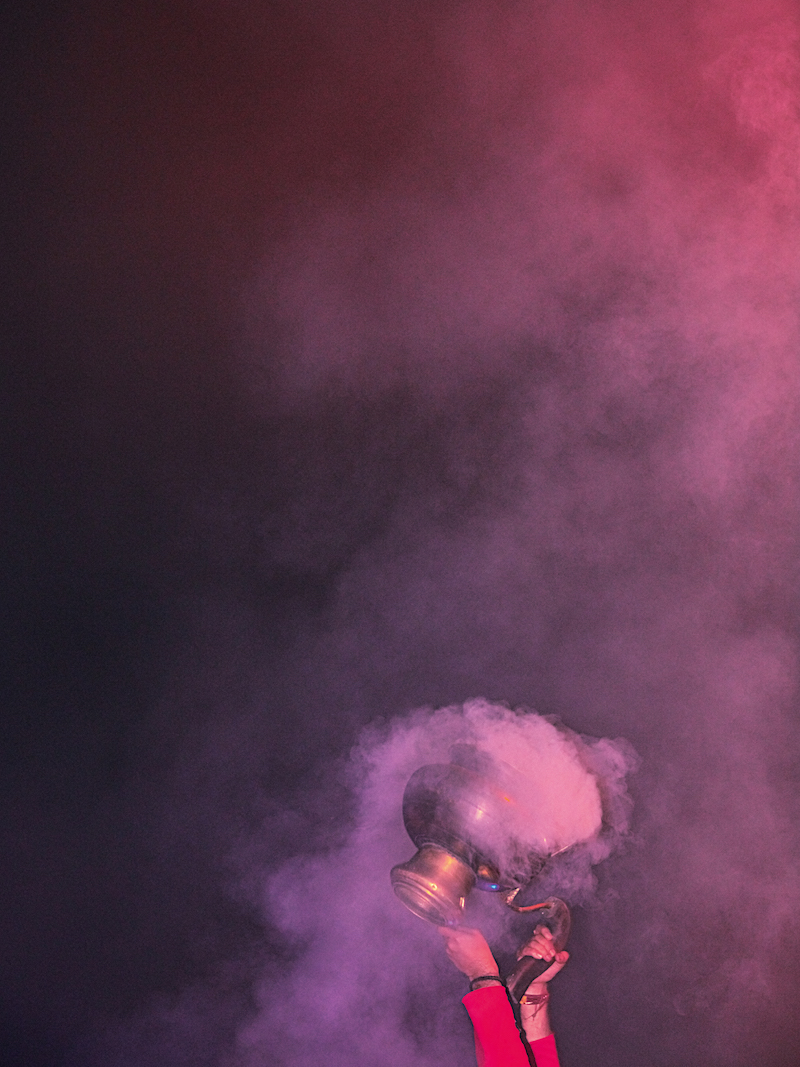Photos envisioning a world free from injustice
- Text by Miss Rosen
- Photography by Tyler Mitchell, Still from Idyllic Space, 2019 © the artist (main image)

Utopia is available to all who call upon their imagination to conjure the perfect world. And who better than the artist to visualise an escape from the infernal damnations of the earth and offer a visionary portrait of a future we might dare to dream into existence?
In ‘Utopia’, Aperture #241, artists, photographers, and writers come together to envision a world without prisons, sexism, racism, xenophobia, homophobia, environmental collapse – and all the other dangers pushing our very existence over the precipice.
Featuring the work of Nicole R. Fleetwood, The Family Acid, Lina Iris Viktor, Mickalene Thomas, Lorna Simpson, among others, Utopia offers a panoply of possible futures at our fingertips: a world without prisons, where people from all walks of life are free and unhindered by the spectre of oppression on every level of existence, starting with the relationship between artist and subject.

Tyler Mitchell, Untitled (Family Time in the Park), 2019 © the artist

Tyler Mitchell, Untitled (In the Blue Bush), 2018 © the artist
“Inherent to photography, especially when you think of it historically, is a strong hierarchy, where the photographer is the one with all the power, the one who is seeing. And the person being seen has almost no power,” Tyler Mitchell says of his work, which envisions Black liberation as the expression of peaceful repose, in an interview with Aperture.
“As a photographer, I ask myself, ‘What are the things I can do to lessen these inherent hierarchies in the photography-shoot structure of seeing and being seen?’”
Mitchell’s question underpins all the works collected here, which plumb the depths of our individual and collective imaginations to consider how a new world would look, and the role of photography in transcending the limitations of time and place.
The stories featured in Utopia offer new ways to consider the every day and the extraordinary as two sides of the same coin. Allen Frame’s 1981 photographs of the downtown New York scene just before the AIDS pandemic devastated a generation reminds us that utopia can be a matter of perspective about the here and now.

Biospherian candidates, 1990, from the film Spaceship Earth, 2020. Courtesy Matt Wolf

Biosphere 2, ca. 1991, from the film Spaceship Earth, 2020. Courtesy Matt Wolf
For American photographer Balarama Heller, utopia is “a personal and collective process, not an attainable external state”. In the 2019 series Sacred Place, currently on view in an online exhibition, Heller brings us to Vrndavana, a place of pilgrimage southeast of Delhi for the Hare Krishna movement, a faith in which he was raised during the 1980s.
Heller set out on the pilgrim road to encounter what mystery might be present, making photographs between three and six in the morning – a sacred time before sunrise where the boundary between the material and spiritual world is thin and porous. “The world has yet to assume its hardened shape made clear by the light of the sun and the energies of devotion are fuelled by the intimacy of the predawn darkness. Things take on an otherworldly glow and while the rest of the world sleeps, a divine presence is imbued in the most ordinary objects,” he explains.
Ultimately, utopia can be founded wherever we are, provided we are willing to do the work. As Heller observes, “The best we can do is be the change we want to see in the world, and that might just be enough to make the world a more equitable, sustainable place.”

Laurent Kronental, Denise, 81 years, Cité Spinoza, Ivry-sur-Seine, 2015 © the artist

Balarama Heller, Offer Nothing, 2019. Courtesy the artist

Allen Frame, Cady Noland and Butch Walker at the beach, from the series 1981, NYC, 1981. Courtesy the artist and Gitterman Gallery, New York

Amarise Carreras, el jíbare reza por amor (El jíbare prays for love), Queens, 2019. Courtesy the artist
Aperture’s ‘Utopia’ issue is available on their official website.
Follow Miss Rosen on Twitter.
Enjoyed this article? Like Huck on Facebook or follow us on Twitter.
Latest on Huck

From his skating past to sculpting present, Arran Gregory revels in the organic
Sensing Earth Space — Having risen to prominence as an affiliate of Wayward Gallery and Slam City Skates, the shredder turned artist creates unique, temporal pieces out of earthly materials. Dorrell Merritt caught up with him to find out more about his creative process.
Written by: Dorrell Merritt

In Bristol, pub singers are keeping an age-old tradition alive
Ballads, backing tracks, beers — Bar closures, karaoke and jukeboxes have eroded a form of live music that was once an evening staple, but on the fringes of the southwest’s biggest city, a committed circuit remains.
Written by: Fred Dodgson

This new photobook celebrates the long history of queer photography
Calling the Shots — Curated by Zorian Clayton, it features the work of several groundbreaking artists including Robert Mapplethorpe, Sunil Gupta, Zanele Muholi and more.
Written by: Miss Rosen

Krept & Konan: “Being tough is indoctrinated into us”
Daddy Issues — In the latest from our interview column exploring fatherhood and masculinity, UK rap’s most successful double act reflect on loss, being vulnerable in their music, and how having a daughter has got Krept doing things he’d never have imagined.
Written by: Robert Kazandjian

Vibrant polaroids of New York’s ’80s party scene
Camera Girl — After stumbling across a newspaper advert in 1980, Sharon Smith became one of the city’s most prolific nightlife photographers. Her new book revisits the array of stars and characters who frequented its most legendary clubs.
Written by: Miss Rosen

Bad Bunny: “People don’t know basic things about our country”
Reggaeton & Resistance — Topping the charts to kick off 2025, the Latin superstar is using his platform and music to spotlight the Puerto Rican cause on the global stage.
Written by: Catherine Jones